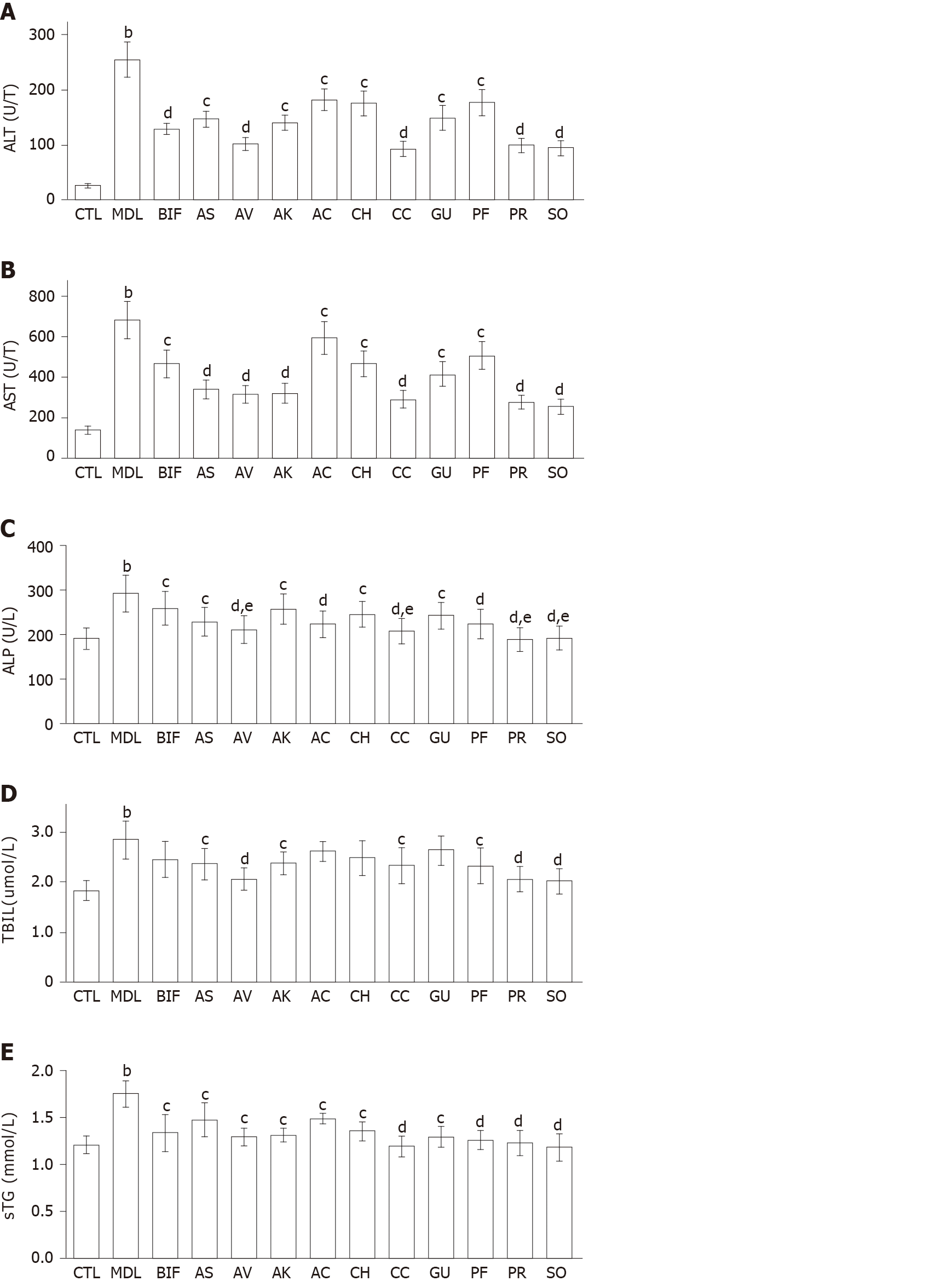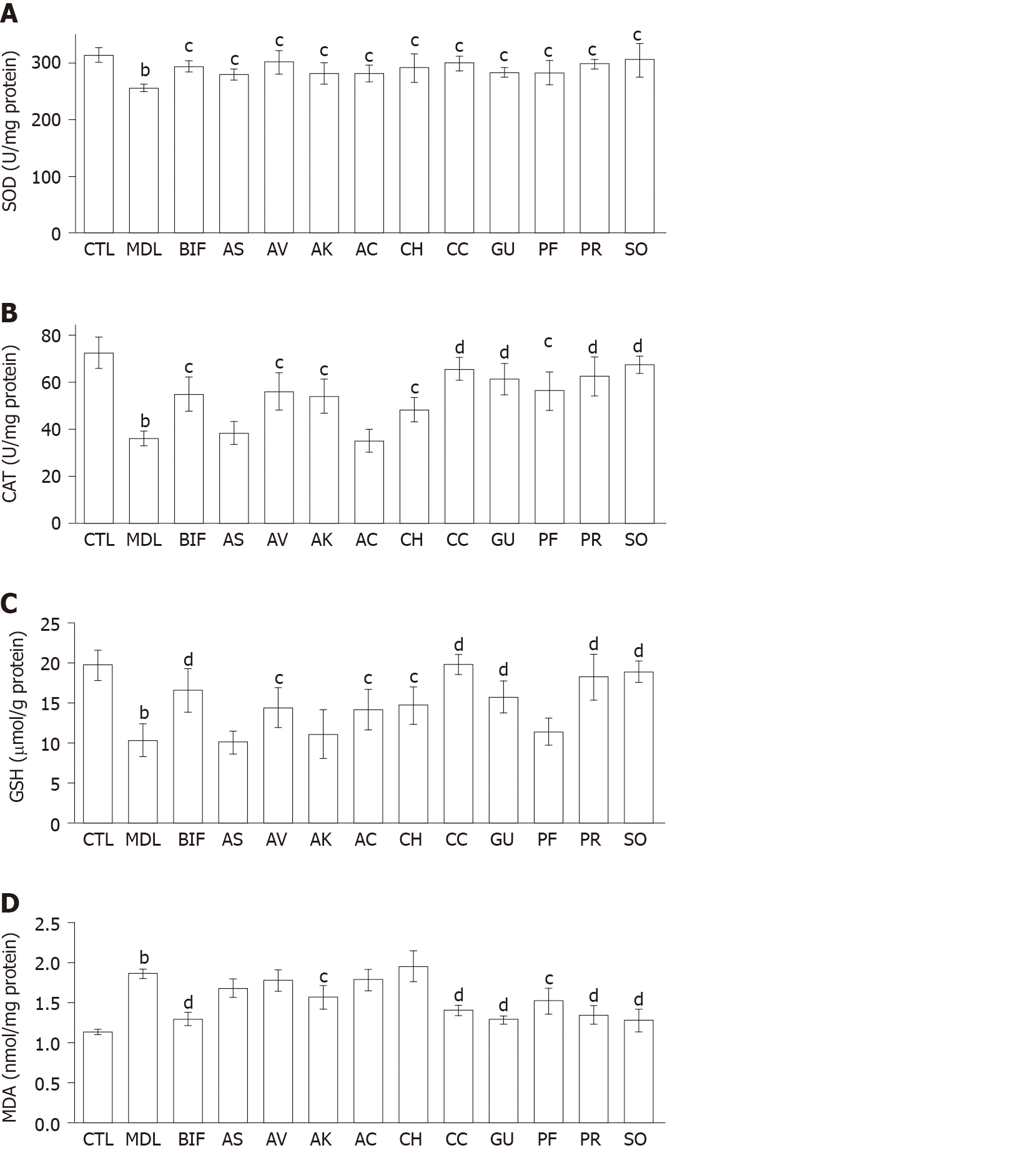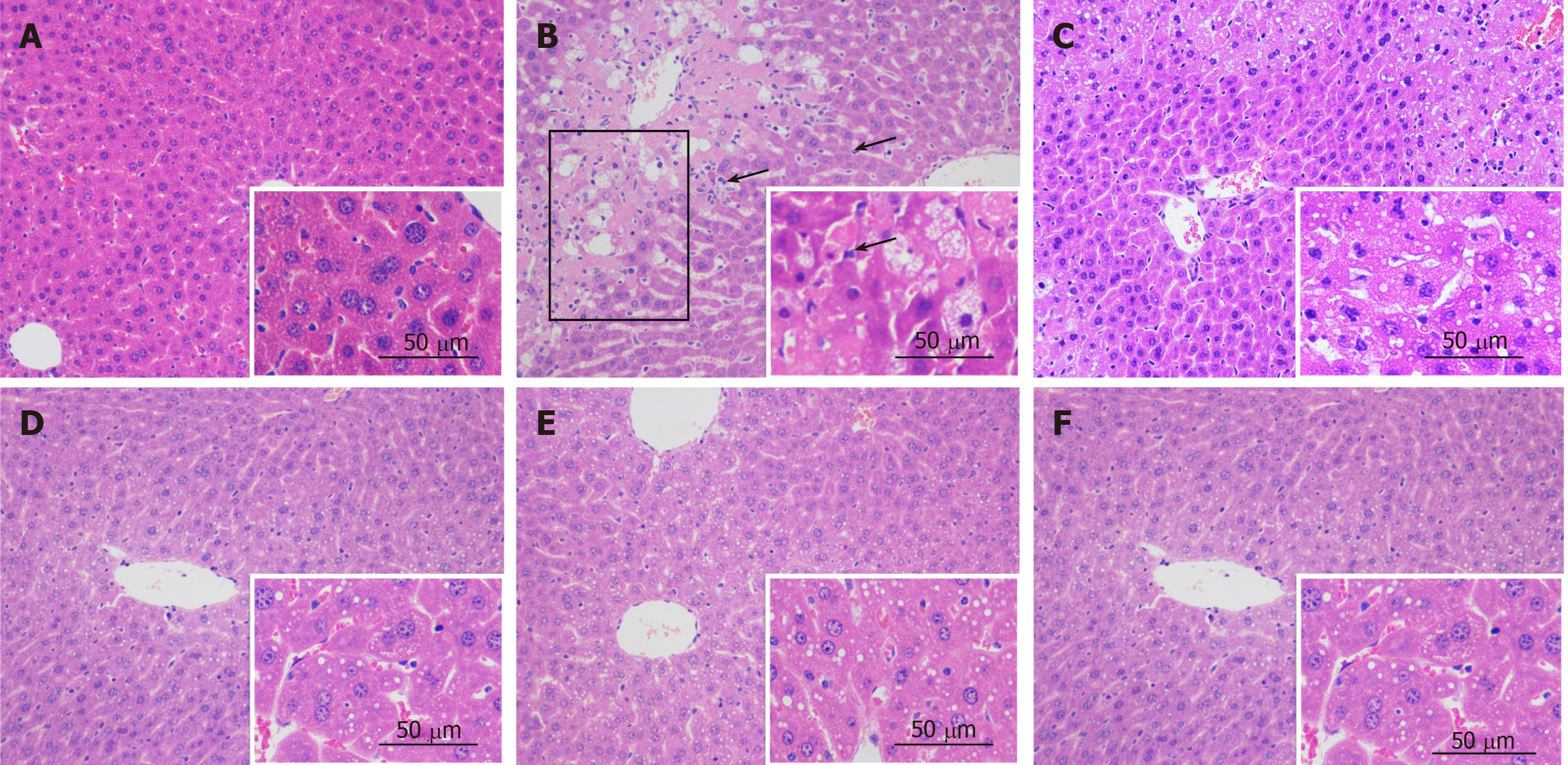Copyright
©The Author(s) 2020.
World J Gastroenterol. Oct 7, 2020; 26(37): 5629-5645
Published online Oct 7, 2020. doi: 10.3748/wjg.v26.i37.5629
Published online Oct 7, 2020. doi: 10.3748/wjg.v26.i37.5629
Figure 1 Effects of ten herbs on serum biomarkers (n = 8).
A: Alanine transaminase ; B: Aspartate transaminase; C: Alkaline phosphatase; D: Total bilirubin; E: Triglyceride. The values are presented as the mean ± standard deviation. aP < 0.05, bP < 0.01 vs control; cP < 0.05, dP < 0.01 vs model; eP < 0.05, fP < 0.01 vs bifendate. ALT: Alanine transaminase; AST: Aspartate transaminase; ALP: Alkaline phosphatase; TBIL: Total bilirubin; TG: Triglyceride; CTL: Control; MDL: Model; BIF: Bifendate; AS: Acanthopanax senticosus; AV: Amomum villosum; AK: Amomum kravanh; AC: Artemisia capillaris; CH: Cimicifuga heracleifolia; CC: Coptis chinensis; GU: Glycyrrhiza uralensis; PF: Pueraria lobata flower; PR: Pueraria lobata root; SO: Sanguisorba officinalis.
Figure 2 Effects of ten herbs on hepatic antioxidant enzymes, glutathione, and malondialdehyde (n = 8).
A: Superoxide dismutase; B: Catalase; C: Glutathione; D: Malondialdehyde. The values are presented as the mean ± standard deviation. aP < 0.05, bP < 0.01 vs control; cP < 0.05, dP < 0.01 vs model; eP < 0.05, fP < 0.01 vs bifendate. SOD: Superoxide dismutase; CAT: Catalase; GSH: Glutathione; MDA: Malondialdehyde; CTL: Control; MDL: Model; BIF: Bifendate; AS: Acanthopanax senticosus; AV: Amomum villosum; AK: Amomum kravanh; AC: Artemisia capillaris; CH: Cimicifuga heracleifolia; CC: Coptis chinensis; GU: Glycyrrhiza uralensis; PF: Pueraria lobata flower; PR: Pueraria lobata root; SO: Sanguisorba officinalis.
Figure 3 Histopathological findings showing the effects of ten tested materials on carbon tetrachloride-induced liver injury (200 × and 400 × magnification) (n = 8).
A: Control; B: carbon tetrachloride (CCl4) model; C: Bifendate + CCl4; D: Coptis chinensis + CCl4; E: Pueraria lobata root + CCl4; F: Sanguisorba officinalis + CCl4. Scale bar, 50 μm in 400×; Box, necrotic area; arrow, inflammatory cell. CCl4: Carbon tetrachloride.
Figure 4 Dendrogram using average linkage (between groups) from systematic cluster analysis of ten medicinal herbs.
Figure 5 Reverse-phase high-performance liquid chromatography analysis of Sanguisorba officinalis decoction.
- Citation: Meng X, Tang GY, Liu PH, Zhao CJ, Liu Q, Li HB. Antioxidant activity and hepatoprotective effect of 10 medicinal herbs on CCl4-induced liver injury in mice. World J Gastroenterol 2020; 26(37): 5629-5645
- URL: https://www.wjgnet.com/1007-9327/full/v26/i37/5629.htm
- DOI: https://dx.doi.org/10.3748/wjg.v26.i37.5629













